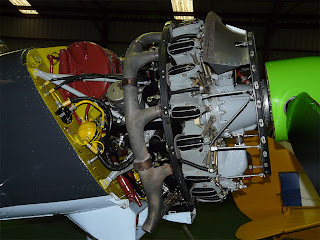Plane spotters
March 2014 Until I began researching the history of my own aircraft, I didn't fully appreciate the informal "historian" role of camera and notebook toting plane spotters.
Avid spotters take pictures of aircraft and where possible, record their registration, serial (or construction) number, location, date and time. While it may seem somewhat esoteric exercise to many, their activities actually help to document the history of a specific machine as well as add to the broader historical record of aviation.
As detailed in an earlier post, I was fortunate to stumble across Marcel de Jong's record of his 1996 plane spotting journey across parts of Eastern Europe; when I was trying to find the home base of my aircraft when it was in DOSAAF service. His full aviation photoblog is Katsudo Aviation Photography.
Although there may be surviving DOSAAF records of my aircraft's service, the breakup of the former USSR and its ensuing confusion had probably resulted in many historical records being consigned to some forgotten storage location or worse, destroyed. So in my case, this is where plane spotters like Marcel helped to fill in some blanks.
At least I know Yak-50 853101's home base was an airfield at Naberezhne, about 15km NNE of Odessa. When sighted in 1996, it was a derelict aircraft bearing its DOSAAF marking 59 (Blue). Sometime in early 1997, 853101 was moved to Pociunai, Lithuania and restored to airworthy condition for its first private owner in the UK. It last flew in the UK in 2002; afterwhich it remained in storage at Little Gransden airfield until I bought it in 2007.
In my earlier post about tracking down the aircraft's first home, I mentioned using photos taken of derelict aircraft at the airfield to cross-check against Marcel's list of aircraft sighted back in 1996. These photos were taken some time between Marcel's 1996 visit and when I found them in 2011, linked to the Google map of the airfield.
Since then, the satellite image of the airfield doesn't show any of the old aircraft hulls onsite. So I guess they have been cleared out. However, the linked photos are still available. I'd imagine these too may be cleared in time. So I consider it fortunate I was able to find the airfield and corroborating photos when I did.




























